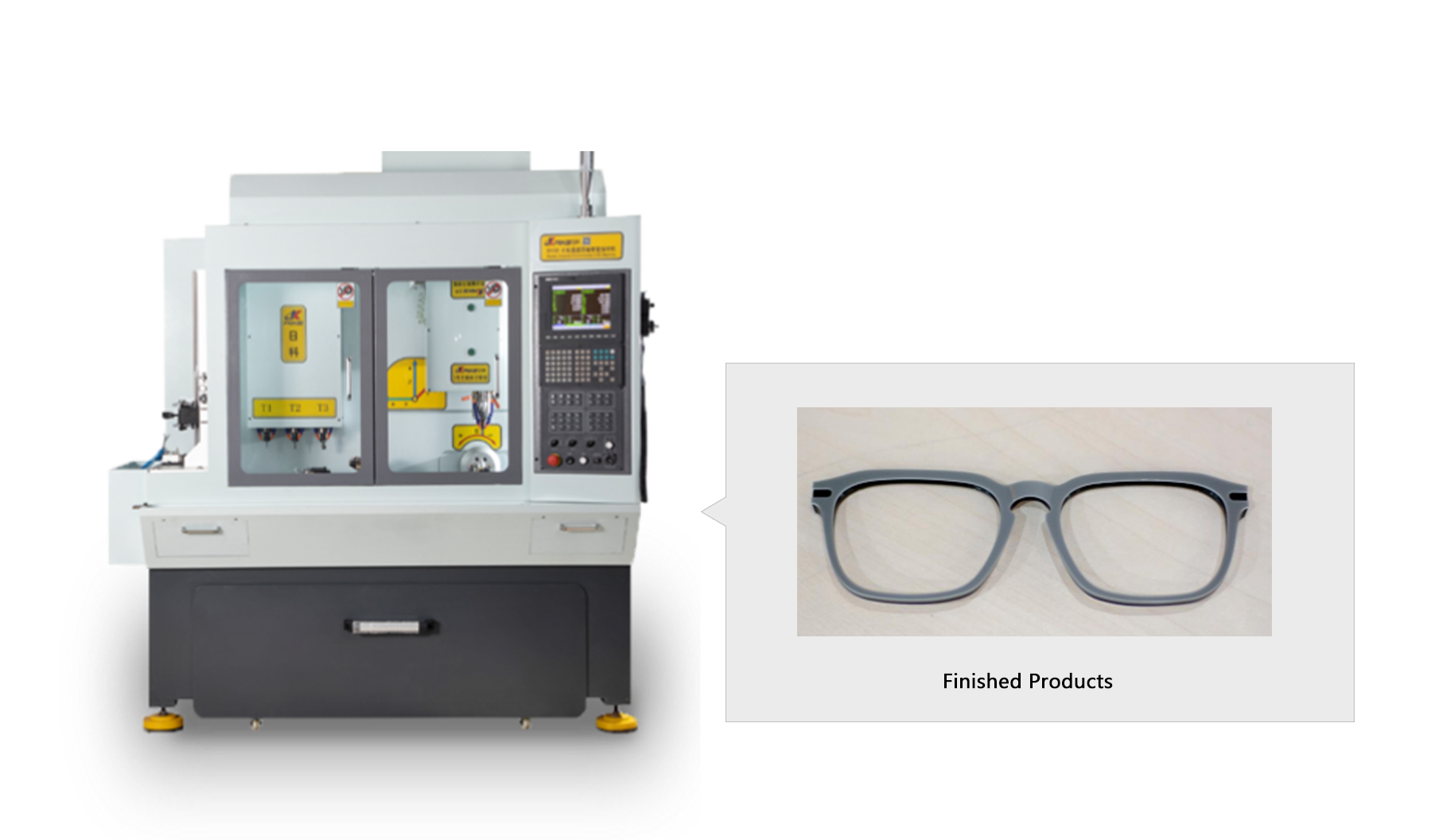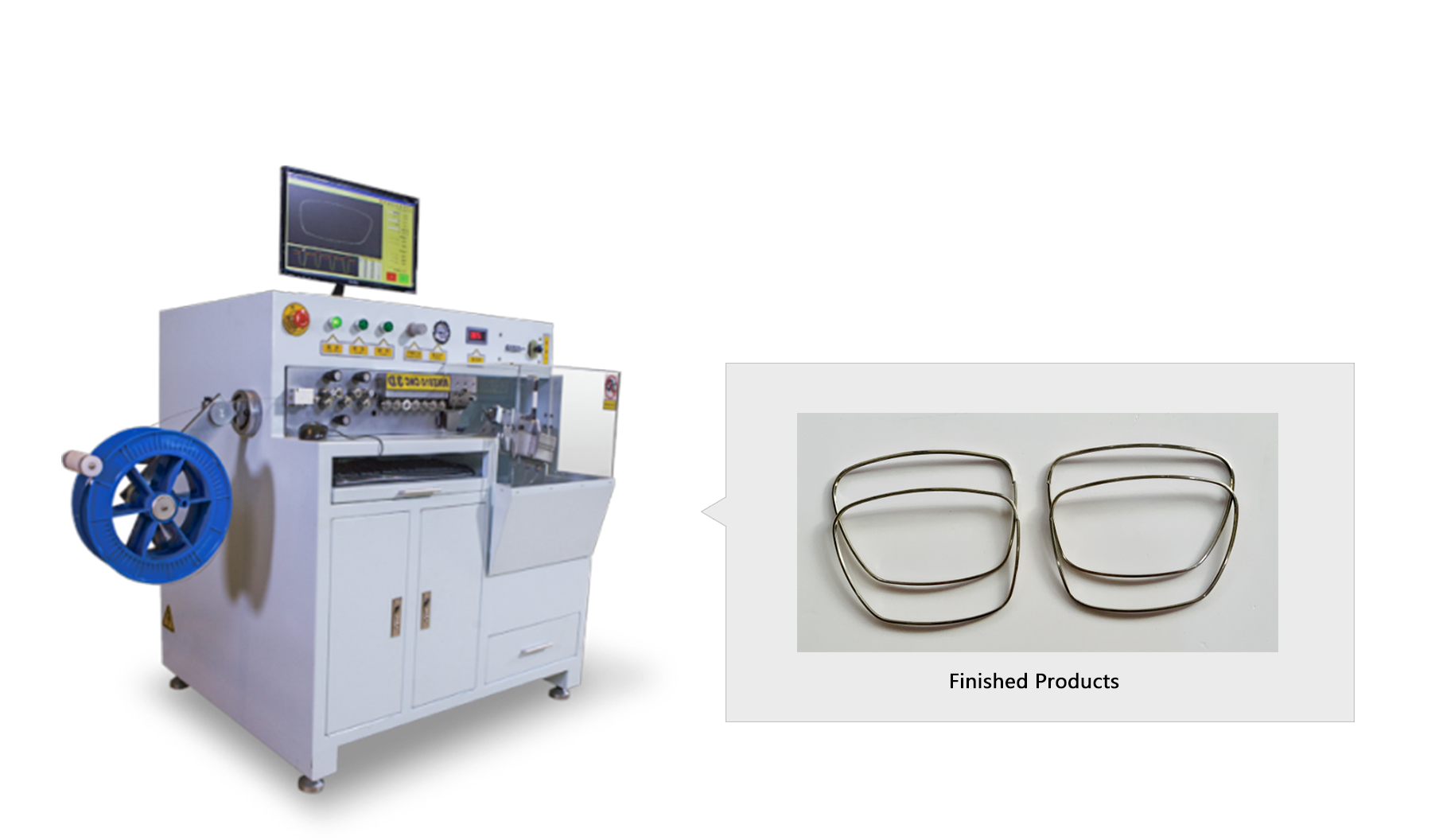Glasses have become an indispensable part of our daily lives, aiding people of various professions in enhancing their vision and protecting their eyes. Have you ever wondered how these essential eyewear items are made? In this blog, we'll explore the machines used in the production of glasses, shedding light on the intricate process that brings clear vision to people worldwide.
One of the primary steps in making glasses involves cutting the lenses to the required size and shape. Lens cutting machines are used for this purpose. These precision tools use computer-controlled technology to accurately cut lenses from larger glass or plastic sheets. The machine ensures that the lenses match the specifications provided by optometrists, ensuring optimal vision correction.
Once the lenses are cut to size, they require edging to fit them securely into the frames. Edging machines are utilized to shape the lenses' edges to fit the chosen frames perfectly. This process is crucial to prevent discomfort and ensure the lenses do not pop out during use.
To give the lenses a smooth and clear finish, lens polishing machines come into play. These machines use gentle abrasion techniques to remove any imperfections or roughness on the lens surfaces, resulting in a crystal-clear vision for the wearer.
Frames are as essential as lenses when it comes to eyewear aesthetics and functionality. Frame molding machines are employed to shape and mold various materials like metal, plastic, or acetate into the desired frame designs. These machines enable manufacturers to produce frames in different shapes and sizes, catering to the diverse tastes and needs of consumers. Acetate eyewear and metal glasses production involve the use of specialized frame molding machines tailored to the characteristics of each material. Acetate eyewear processing relies on acetate sheet cutting, CNC milling, lens grooving, and heat molding machines. In contrast, metal glasses production utilizes 3D eye rim bending machines, welding equipment, surface finishing machines, and ultrasonic cleaning machines.
This machine is used to cut large acetate sheets into smaller pieces, preparing them for the subsequent molding process.
A Computer Numerical Control (CNC) milling machine is employed to precisely shape the acetate material. The machine follows digital instructions to carve out intricate designs and frame shapes from the acetate sheets.

In some acetate eyewear designs, the frames may require grooves to hold the lenses securely. A lens grooving machine is used to create these grooves with precision, ensuring a perfect fit for the lenses.
Acetate frames need to be heated to a specific temperature to become malleable for shaping. The heat molding machine facilitates this process by softening the acetate frames, making it easier to mold them into the desired form.
This specialized equipment is used to bend metal eyewear frames accurately. The machine utilizes computer programming and precise measurements to bend the metal material into various frame shapes according to design specifications.

Metal glasses often consist of multiple frame components that need to be joined together securely. Welding equipment, such as laser welders, is used to fuse these metal parts, creating a strong and durable frame structure.
After the metal frames are shaped and welded, they may undergo surface finishing processes. These machines can polish the frames, apply coatings or plating, and add any desired decorative elements.
To ensure the metal glasses are free from dust, debris, or residue, they undergo a cleaning process. Ultrasonic cleaning machines use high-frequency sound waves to clean the frames thoroughly without causing any damage.
For those seeking personalized eyewear, frame engraving machines come in handy. These machines use laser technology to etch intricate designs, patterns, or names onto the frames. Whether it's for fashion or branding purposes, frame engraving adds a touch of uniqueness to each pair of glasses.
Tinting Machines
Tinted lenses are popular among people in various professions, including outdoor enthusiasts, athletes, and drivers. Tinting machines are employed to apply custom colors to the lenses, providing protection against harmful UV rays and reducing glare. These machines ensure that the tint is evenly distributed across the lenses for optimal visual comfort.
The production of glasses involves a combination of cutting-edge technology and skilled craftsmanship. From lens cutting and edging to frame molding and tinting, each step is essential in creating high-quality eyewear for people of all walks of life. As you put on your glasses to improve your vision or style, take a moment to appreciate the sophisticated machines that make it all possible. Thanks to these machines, clear vision is within reach for everyone, enhancing their daily lives and helping them excel in their respective professions.